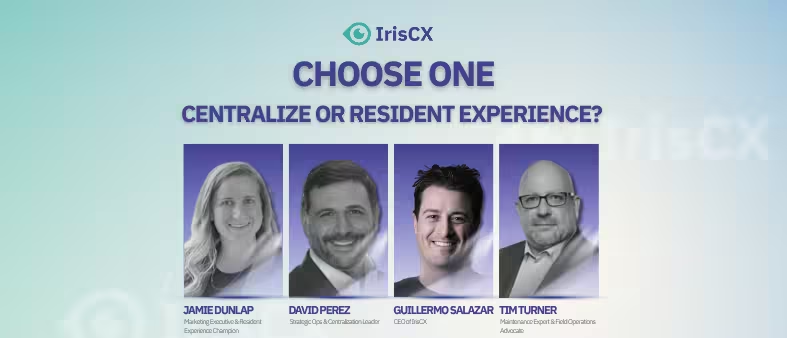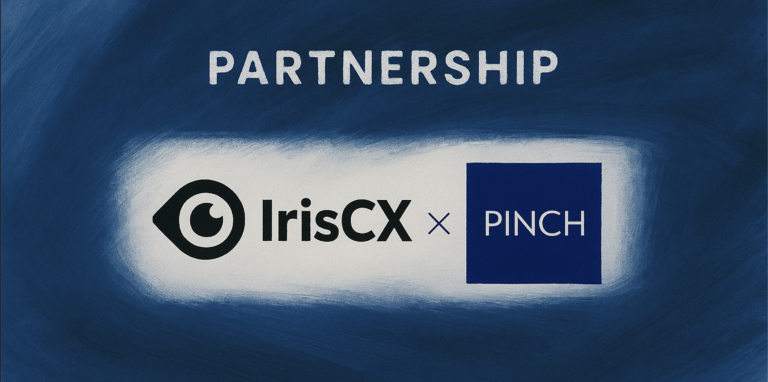The Multifamily Fork in the Road
Operators in the multifamily industry feel the pressure to centralize operations while still delivering a top-tier resident experience. These goals seem at odds. Do you prioritize efficiency or satisfaction? Budget savings or retention rates? But what if that’s the wrong question?
A recent LinkedIn Live session brought together three powerhouse industry leaders to unpack this: Jamie Dunlap (Garrett Residential), Tim Turner (Avenue5), and David Perez (formerly CARROLL/RMR). They brought decades of insight to one of the sector’s most urgent debates. And they didn’t hold back.
Spoiler alert: It’s not either/or. It’s how.
Three Leaders, One Big Question
Jamie Dunlap leads marketing at Garrett Residential and brings over 15 years of experience focused on marketing & resident satisfaction.
Tim Turner manages maintenance at Avenue5 Colorado. He leads teams on the ground and connects their performance to results.
David Perez scaled Caroll from 20,000 to 35,000 units before its acquisition by RMR in 2023. He led centralization efforts and learned a key lesson: keep the resident front and center.
They tackled a bold question: Can we centralize without compromising the customer experience?
Why We Think It Has to Be One or the Other
Jamie didn’t hold back. “Your back door stays wide open if renewals walk out.” Maintenance often causes the exit—not the work itself, but the attitude, communication, and responsiveness.
Tim revealed the deeper challenge: maintenance always takes the first budget cut. “Do more with less” becomes the default. Even when funds exist, talent doesn’t. “I can spend $6,500 onboarding someone only to learn they can’t change a lightbulb.”
David initially took the Six Sigma route—streamline, cut costs, optimize. But his team forgot the “why.” “Apartments exist for people. Our customers are residents. When we center them, the experience transforms.”
He added, “We need to stop throwing more work on people who are already at capacity. The model hasn’t changed in decades, but the expectations have.”
And that transformation includes everyone—from HVAC techs to marketing strategists.
From Trade-Offs to Trade-Ups
David introduced a simple framework:
Identify tasks.
Match tasks to the right skills.
Centralize or automate the rest.
This works in practice. Let HVAC experts fix HVAC. Let someone else manage emails, scheduling, and status updates.
Jamie shared creative tactics: a popcorn bag after a service call, a maintenance-team breakfast. “Everyone sells,” she said. “Whether you’re asking a resident to renew or a prospect to lease.”
Tim built “floating teams”—skilled techs rotating between properties to plug holes and solve problems. For them to succeed, they need consistency.
“Say what you’ll do. Do it. Every time,” Tim said. “Miss it once, and that’s what they’ll remember.”
Jamie added, “Your maintenance team might fix the problem, but if they don’t communicate or show up with the right attitude, the resident still walks away unhappy.”
David reinforced the point: “The customer experience is the product. And the outcome of every touchpoint should be aligned with that expectation.”
Communication, Consistency, and Customer Experience
The panel didn’t offer a magic bullet, but they reached alignment:
Communicate constantly. Centralization fails without strong communication.
Stay consistent. Consistency builds trust. Trust fuels retention.
Elevate the experience. Customer experience isn’t fluff. It drives savings.
David laid out a playbook: pick three resident journey gaps. Fix them. Measure results. Iterate.
He added a hard truth: “We’ve used the same operating model for 40 years. But the job has grown. Tech changed. Expectations changed. We just keep piling on our techs without easing the load.”
Centralization shouldn’t erase the human element. It should protect it. Done right, it frees teams to shine where they matter most.
Jamie noted how rarely marketing and maintenance interact. That must change. “We found ways to build together. Not blame.”
David went further: “Customer experience cuts costs. Every industry shows that. But finance and asset management still drive decisions based on lagging metrics. That needs to shift.”
Tim said it best: “If your techs understand how they impact renewals, they’ll act differently. They won’t just fix the leak—they’ll leave a good impression.”
The Three C’s: What to Prioritize Next
Communication: Use tech or training to keep residents, techs, and teams informed.
Consistency: One great experience means little if followed by silence. Build habits, not exceptions.
Customer Experience: Stop focusing on how you deliver service. Focus on how residents experience it. Then work backward.
Ask a Better Question
Still asking, “Should we centralize or prioritize resident experience?” You’re asking the wrong question.
Instead, ask: “How can we build systems that help our teams deliver the experience residents expect—at scale?”
As Tim said, “We all need to row in the same direction.”
Ready to Build Both?
If you’re facing this challenge, join the conversation. Follow us on LinkedIn for more sessions, or connect with us at IrisCX.com to discover how we help multifamily operators modernize maintenance, align teams, and delight residents—without breaking the budget.
Don’t choose between centralization and experience.




